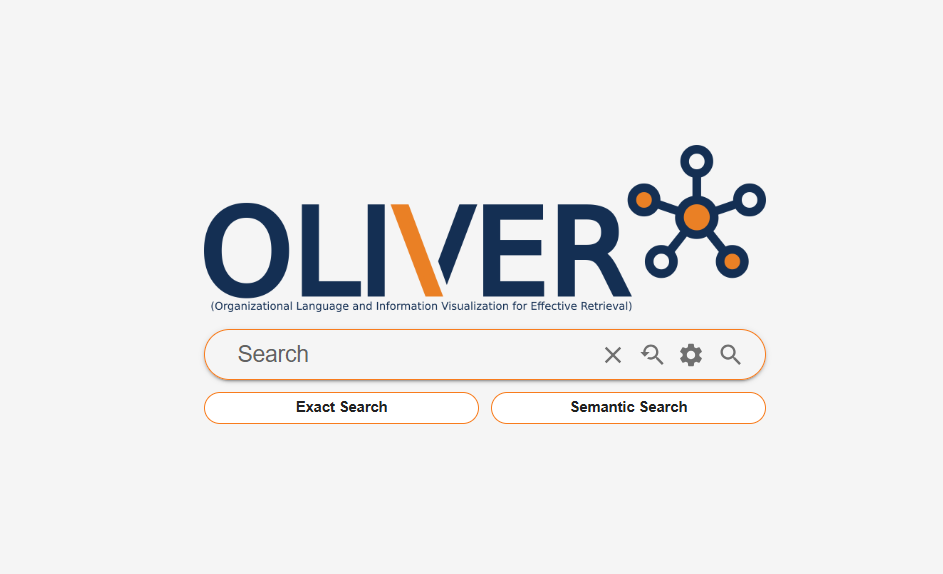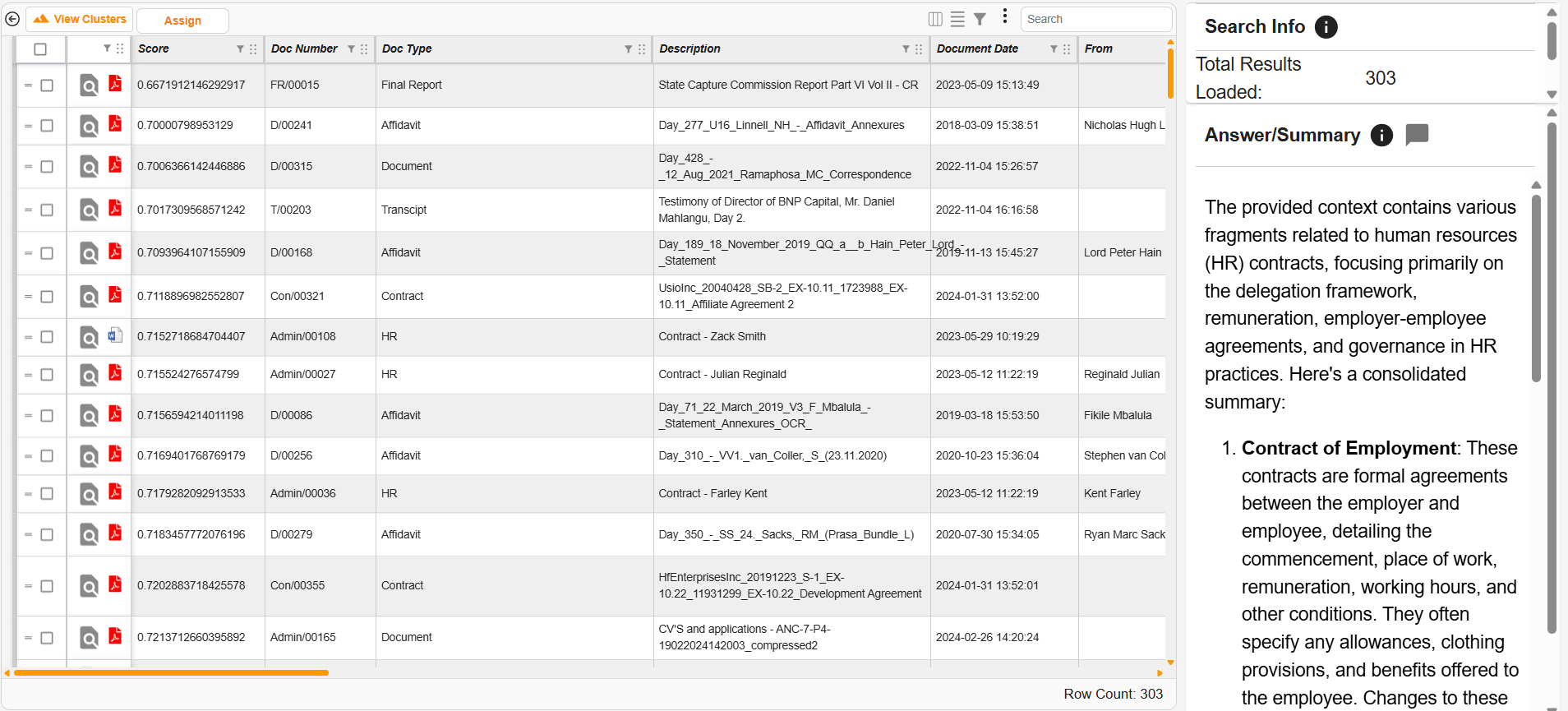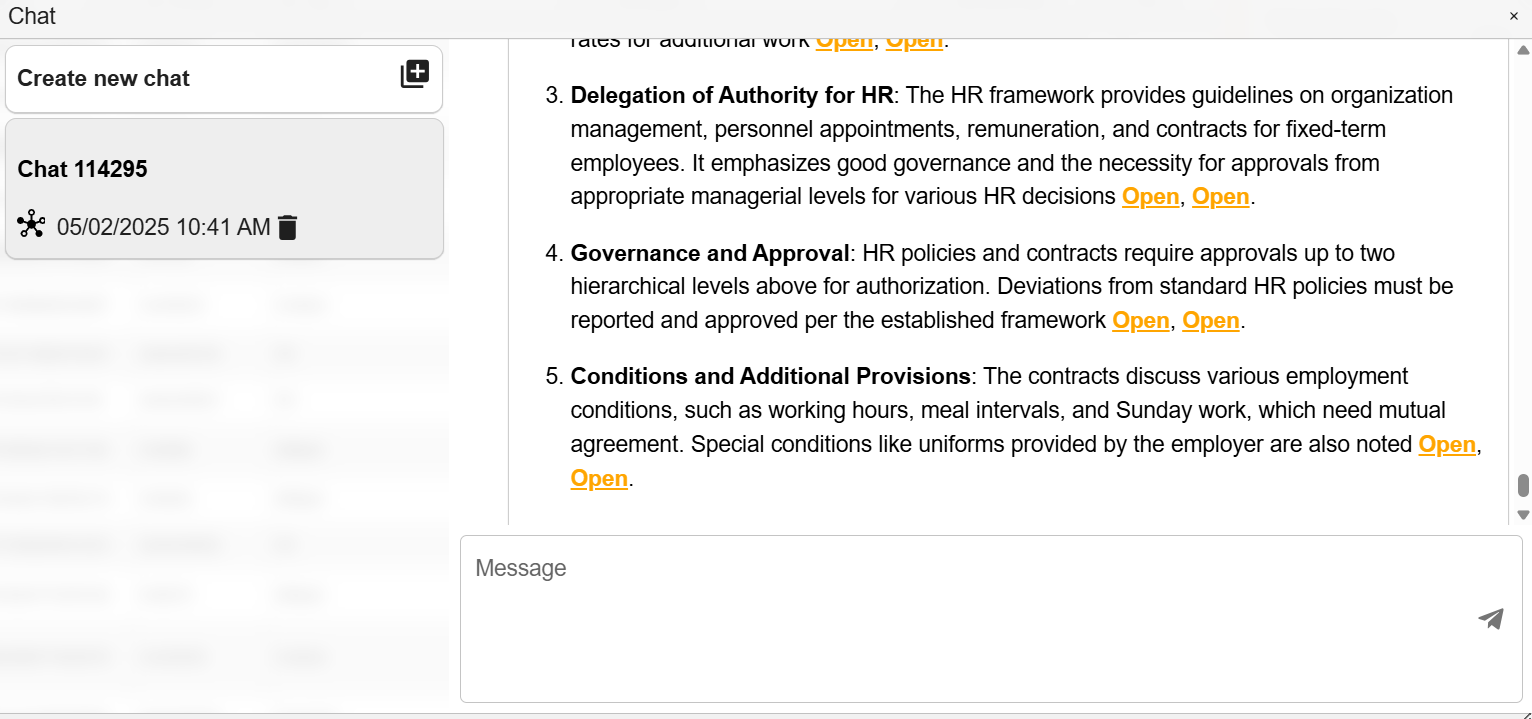Oliver
Overview
Oliver is Docwize’s AI-driven search module. It allows users to dynamically interact with their documents and data, producing AI-driven responses, as well as visualisations of data clusterings.

'Oliver' homepage
| Field | Description |
|---|---|
| Search bar | Users can enter in their search query in the search bar. |
 | Clears the search text. |
 | Displays a list of previous searches. |
 | Navigates to the ‘Advanced Search’ dialog. |
 | Executes default (semantic) search. |
| Exact Search | When selected, the search that runs will search for exact matches of the word/phrase inputted in the search bar. |
| Semantic Search | When selected, a semantic search run. A semantic search will focus on the meaning and intent behind a user's search query, rather than just matching keywords. |
‘Advanced Search’ Dialog
The ‘Advanced Search’ feature allows users to set up particular rules to refine or filter their search using multiple parameters (e.g. exact phrases, date ranges, categories, specific fields). An orange dot by the 'Advanced Search' icon indicates that rules are being applied to a search.

‘Advanced Search’ rules activated
.png)
‘Advanced Search’ Dialog
| Field | Description |
|---|---|
| AND | A dropdown menu that allows users to select ‘AND’ or ‘OR’. |
| + Rule | When clicked, fields related to a rule appear for population. |
| + Group | When clicked, fields for a new group of rules appears for population. |
| Operator | A dropdown menu of possible fields for a user to select as part of the rule, as well as for defining what applies to the rule (Eg. equals, contains, etc.). |
As users create rules, a tally of total possible rows of responses is provided in the upper right corner.

Example: Tally of Possible Rows of Responses
NOTE: spelling counts!
The search engine will look for matches of words/phrases inserted by users in the rules. If applied rules are too strict, it is possible that no search results will be found.
Example of 'Advanced Search' Features
Example of 'Advanced Search' Features
'Search Results' View
When a user initiates a search, the results will be populated in the 'Search Results' view.

Example: 'Search Results' View
The horizontal toolbar has the following options:
| Field | Description |
|---|---|
 | Navigates back to the Oliver homepage. |
| View Clusters | Navigates to various options of visualised search results clusters. |
| Assign | Navigates to the 'Assign' dialog. |
| Grid functions | See Doc Grid for details. |
The right-side bar of the 'Search Results' view includes the following:
| Field | Description |
|---|---|
| Total Results Loaded | Reports on how many documents in the database pertaining to the search are included in the results. |
| Total Cluster Generated | Indicates the number of clusters generated in the search. In data analysis, a cluster refers to a group of data points that are similar to one another, and distinct from other data points. |
| Answer/Summary | A summary of the search results. Included are links to specific documents which can be opened. Clicking on ‘Open link’ opens up the relevant document in a new tab. |
| The ‘Expand Further’ feature navigates to the chat function. Here, users can deepen their conversation regarding search results. |
‘Chat’ Dialog
Users can use the ‘Chat’ feature to engage in conversation with Oliver about searches.

Example: 'Chat' Dialog
| Field | Description |
|---|---|
| Create new chat | Enables users to begin a new chat, generating a new session of interaction with Oliver. |
| List of past/saved chats | The left-side bar populates a list of past chats. |
 | Enables users to delete specific historic chats. |
| Chat results | The right-side bar is where the chat results are generated. |
| Message | The ‘Message’ sections is where a user can input queries, follow-up comments, requests, etc. regarding a search topic. |
| Oliver/Globe/Folder icon | Indicates the context in which the chat was initiated. Oliver: chat is based on the documents in the document grid. Globe: chat started with no context. Folder: the chat is about the contents of a folder. |
‘View Clusters’ Page
When users click on the ‘View Clusters’ button, they are directed to the ‘View Clusters’ page. This data analytics section enables users to interact with their search results through a variety of visualised representations that depict aspects like the frequency and proximity of conceptually-related cluster results. The various visualisations give users an overview of search results. Users can click on sections of interest to access more detailed information, such as fragments of relevant search results as well as links to open specific relevant documents.

Example: Data Clustering Results